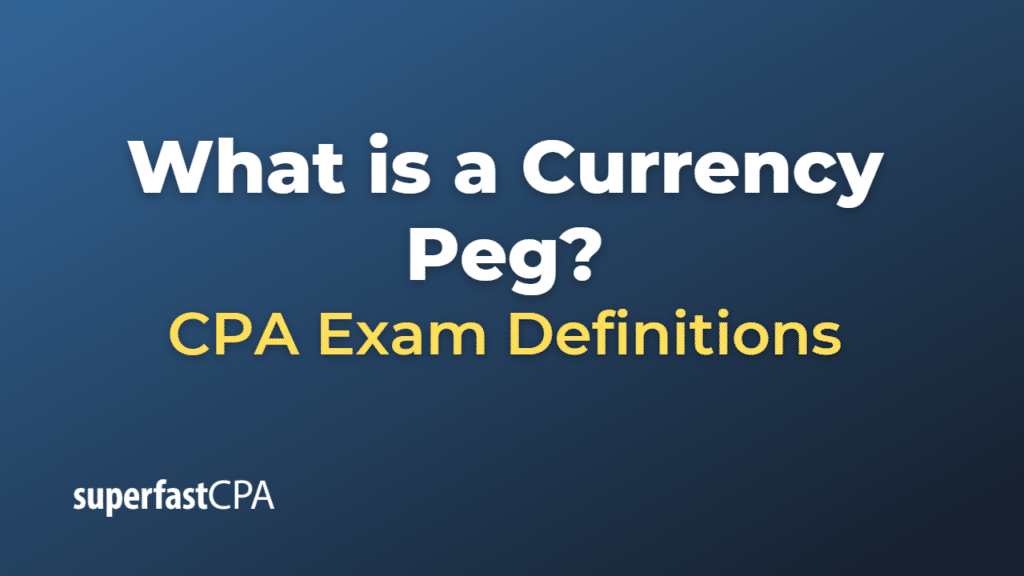Currency Peg
A currency peg is a policy in which a country’s government or central bank sets a specific fixed exchange rate for its currency against a foreign currency or a basket of currencies. Once the peg rate is set, the country will intervene in the foreign exchange market to maintain its currency at the pegged exchange rate.
Countries may decide to peg their currency for a variety of reasons:
- Stability: Pegging a currency can help to stabilize exchange rates and provide a more predictable environment for trade and investment. This can be particularly beneficial for countries that heavily rely on international trade.
- Inflation control: By pegging its currency to a stable currency like the U.S. dollar or the euro, a country can help to import low inflation from the stable currency’s country.
- Prevent currency speculation: A fixed exchange rate can help to prevent damaging speculation and volatility in a country’s currency.
However, maintaining a currency peg can also have drawbacks. It can limit a country’s monetary policy flexibility, as the country will need to adjust its monetary policy to maintain the fixed exchange rate, even if different policy might be needed for domestic economic conditions. It can also expose the country to balance of payments crises if the peg is perceived as unsustainable and speculators attack the currency.
Examples of currency pegs include the Hong Kong dollar, which is pegged to the U.S. dollar, and the Danish krone, which is pegged to the euro.
Example of a Currency Peg
Let’s take the example of Hong Kong. The Hong Kong dollar (HKD) has been pegged to the U.S. dollar (USD) since 1983. The exchange rate has been allowed to move within a narrow band, between 7.75 and 7.85 HKD per USD.
The Hong Kong Monetary Authority (HKMA), which acts as the region’s de facto central bank, maintains this peg by buying and selling U.S. dollars as needed to keep the exchange rate within this band.
For instance, if there’s high demand for the HKD (which could cause the value of the HKD to rise above the upper limit of the band), the HKMA will sell HKD and buy USD to increase the supply of HKD in the market and decrease its value. Conversely, if demand for the HKD is low (which could cause its value to fall below the lower limit of the band), the HKMA will buy HKD and sell USD to reduce the supply of HKD in the market and increase its value.
By doing this, the HKMA ensures that the exchange rate between the HKD and the USD stays within the designated band. This provides a level of stability for Hong Kong’s economy, which is heavily dependent on international trade and finance. However, it also means that Hong Kong’s monetary policy is effectively tied to the U.S. Federal Reserve’s policy, as the HKMA needs to adjust its policy to maintain the pegged exchange rate.













